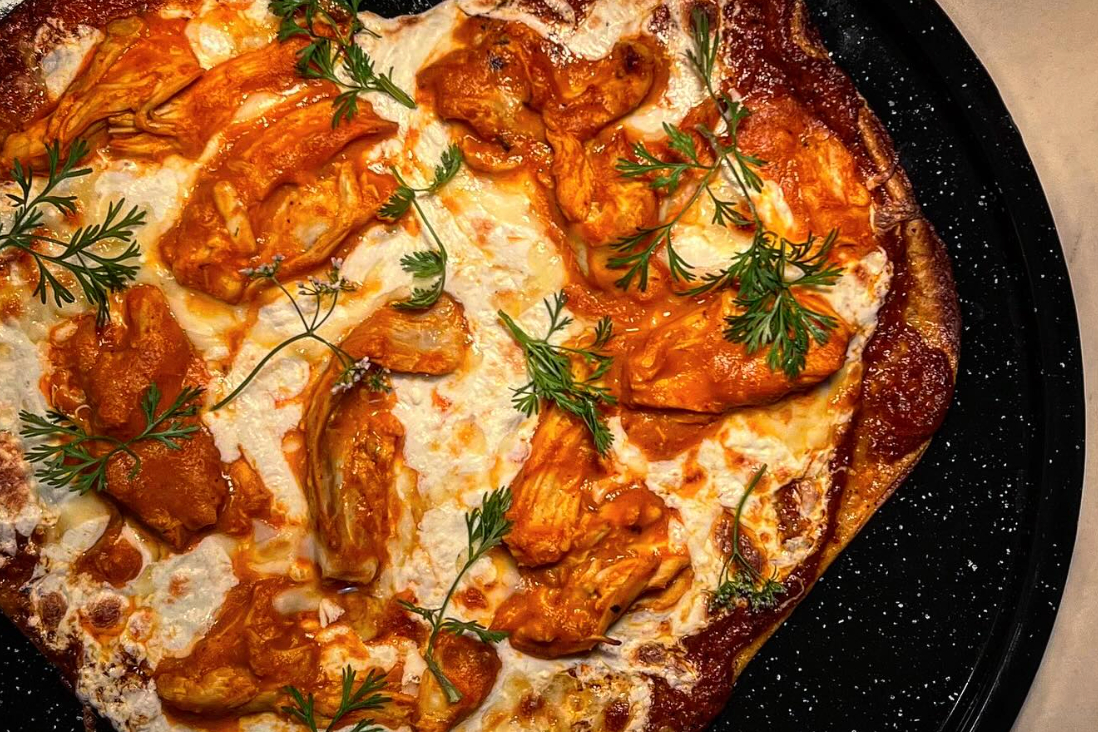
Savory, crispy, and spicy, Tlayudas are a classic of Mexican cuisine. A street food favorite in Oaxaca, Tlayudas consist of a large corn tortilla piled high with refried beans, Oaxaca cheese, various meats, lettuce, or cabbage.
As an Oaxaca native, Chef Alex Mixcoatl is passionate about Tlayudas, and at his restaurant El Lugar Cantina, he’s creating his version of the classic dish. With unique toppings like spicy shrimp or mushrooms, Mixcoatl’s Tlayudas might differ from tradition but remain rooted in Mexican flavors. And the best part? Chef Mixcoatl is here to share his favorite Tlayuda ingredients and insights.

How to cook Tlayudas
Traditionally, Tlayudas are made on a flat griddle or plancha. At El Lugar, Mixcoatl changes the dynamic by using a wood-fired oven that roars as hot as 600 to 700 degrees Fahrenheit. The intense wood-fire cooking adds a bit more crisp and char to the finished dish.
Of course, if you’re interested in making the El Lugar Tlayudas at home, a wood-fired oven is unlikely. In its place, Mixcoatl has some great advice. “They should try to make their own masa,” said Mixcoatl. “It’s easy to find maseca flour to make your own tortilla. Then they can use a plancha or comal, which is like a skillet, to heat the Tlyudas.”

All about Tlayudas toppings
The range of toppings for Tlayudas can be endless, but for Mixcoatl, the chef likes to focus on the cohesion of flavors. “The way I approach the Tlayudas is to make sure I incorporate ingredients that are sour, salty, and spicy,” explained Mixcoatl. “And if I choose ingredients that are native to Mexico, I know they’ll always be balanced out by topping it off with Mexican cheese.”
The Tlayudas at El Lugar are smaller compared to the native Oaxaca version — 12 inches instead of 16 or 18 inches. Another unique aspect is the amount of cheese, which is substantially more than traditional Tlayuda. The result is that El Lugar Tlayudas is more akin to a thin-crust Mexican pizza. For toppings, this means a range of ingredients, although Mixcoatl has a clear favorite.
“Growing up in Puebla, I ate a lot of chicken, so my favorite topping will always be chicken,” said Mixcoatl. “My favorite creation for the Tlayuda menu is the Chicken Tinga. Tinga is pulled chicken, which we add to the Tlayuda with refried beans, and always make sure to top it with Oaxaca and Cotija cheeses. A great tip for using chicken is to marinate it first. We marinate our chicken with citrus and herbs like lemon, thyme, and rosemary, but it’s the Mexican herbs that will add accentuated flavor like epazote, a Mexican herb we use in our chicken marinade.”
Of course, chicken is only the beginning. Meat like spicy beef birria is also excellent, along with seafood like shrimp. It really just comes to your imagination.



